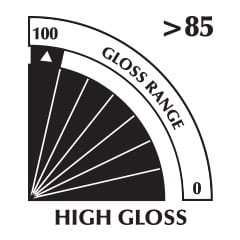SELECTING PAINT GLOSS
Selecting the right gloss for your paint project can be challenging. Below explains the practical and aesthetic considerations for choosing gloss that will help you make the right choices.
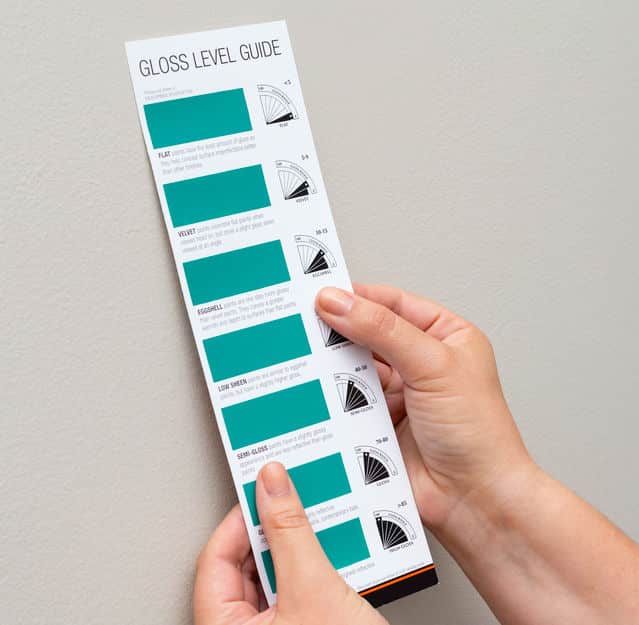
UNDERSTANDING GLOSS
Gloss is about shine. It describes how much light is reflected from the surface of the paint. If a painted surface is very smooth and glass-like, the reflection is perceived to be “shiny” or “glossy.” Conversely, a flat or satin/low sheen paint has a rough surface profile after it dries. Light that hits such a surface is reflected and scattered in many different directions so it appears “flat” to the eye.
WHY GLOSS IS IMPORTANT
The gloss level of paint can have a significant impact on both appearance and serviceability. Increasing gloss improves the durability of paints – including scrub-, stain- and moisture-resistance. However, higher gloss levels tend to highlight defects and imperfections on a surface.
Gloss level also affects color perception. The same color with a different gloss will appear as a different color. The color in a higher gloss paint will appear brighter and richer than the same color in a lower gloss paint.
SATIN/LOW SHEEN PAINT VS HIGH GLOSS WHICH IS BETTER?
It’s not a question of which type of glossy, flat or satin/low sheen paint is better, but which is suited for the correct job. Below, we take a look at a paint sheen chart and a definition for several types of paint such as flat, velvet, eggshell, satin/low sheen, semi-gloss, gloss and high gloss and which uses they’re best suited for in the home, workplace and outdoors.
WHAT TYPE OF PAINT GLOSS IS BEST
Flat
Flat paints have the least amount of gloss so they help conceal surface imperfections better than other finishes and are ideal for walls that are rough or dented. They also touch-up better, which makes a flat paint an ideal choice for family rooms, living rooms, dining rooms and bedrooms. Flat paints are also a good choice for ceilings because of their low reflectivity. Stains can be difficult to remove from flat finishes, so it’s best to use flat paints in areas that do not experience a lot of traffic.

Velvet
Velvet paints resemble flat paints when viewed head on, but show a slight gloss when viewed at an angle. This slightly higher gloss provides for a more washable or scrubbable surface. These paints are ideal for areas with high traffic, such as hallways and kid’s rooms.
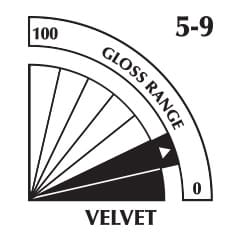
Eggshell
Eggshell paints are one step glossier than velvet paints. They convey a greater warmth and depth to surfaces than flat paints. Eggshell also tends to resist stains better than flat or velvet paint, although not as well as semi-gloss and high gloss paints. Like velvet paints, these paints are ideal for areas with traffic, such as dining rooms or a kid’s room.
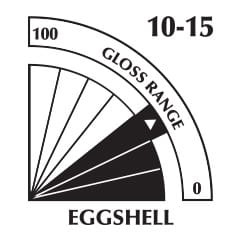
Satin/Low Sheen
Satin/Low sheen paints are similar to eggshell paints, but have a slightly higher gloss. They are a good choice for areas where some gloss is desired, but good cleaning properties are also necessary, such as, kitchens, laundry rooms and bathrooms. Their slightly glossy appearance, however, tends to highlight surface imperfections more than flat paints.
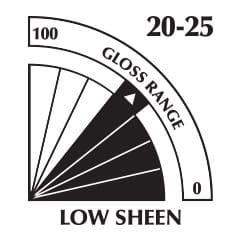
Semi-Gloss
Semi-gloss paints have a slightly glossy appearance and are less reflective than gloss paints. They offer good stain resistance, are easy to clean, and are most often used in rooms requiring frequent scrubbing, such as kitchens and bathrooms. Semi-gloss is also a good alternative to gloss paints for use on windows, trim, cabinets and doors.
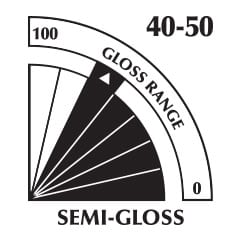
Gloss
Gloss paints have a highly reflective appearance imparting a slick, contemporary look. They are tough, durable and stain-resistant. Gloss paints are easier to clean than lower gloss paints and are typically used in kitchens, bathrooms and on doors and cabinets exposed to fingerprints and grime. Because of its high reflection, gloss paint can highlight surface imperfections.
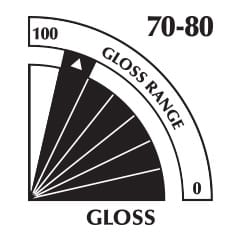
High Gloss
High gloss paints have the highest reflective appearance. They are the toughest, most durable and most stain resistant of all finishes. High gloss paints are the easiest to clean and are typically used on doors and cabinets exposed to dirt and oil and can also be used for trim and some woodwork. High gloss paint can emphasize surface imperfections.
